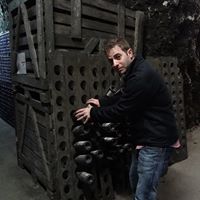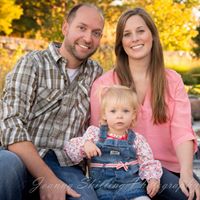Jason D Meltzer
age ~41
from Woodland Hills, CA
- Also known as:
-
- Jamie Meltzer
- Janet Meltzer
- Phone and address:
- 4501 Cezanne Ave, Woodland Hills, CA 91364
Jason Meltzer Phones & Addresses
-
s
- 4501 Cezanne Ave, Woodland Hills, CA 91364
- Sagle, ID
- Santa Monica, CA
- Topanga, CA
- Tempe, AZ
- Los Angeles, CA
- Woodland Hls, CA
Resumes

Jason Meltzer
view sourceName / Title
Company / Classification
Phones & Addresses
SurfDog LA
Pet Sitters · Dog Walkers · Pooper Scoopers
Pet Sitters · Dog Walkers · Pooper Scoopers
2002 4, Santa Monica, CA 90405
3233645291
3233645291
Wag!
Dog Walkers
Dog Walkers
1750 N Sierra Bonita Ave, Los Angeles, CA 90046
3234871924
3234871924
Us Patents
-
Video Customization And Presentation Systems And Methods
view source -
US Patent:8451325, May 28, 2013
-
Filed:Jan 24, 2010
-
Appl. No.:12/692635
-
Inventors:Daniel A. Birnbaum - Los Angeles CA, US
Jason T. Meltzer - Los Angeles CA, US -
Assignee:Sightcine Inc. - Los Angeles CA
-
International Classification:H04N 9/31
-
US Classification:348 53, 348 55, 348598
-
Abstract:A disclosed projection system includes a display that renders a video representing a sequence of original images each having a corresponding frame interval, and one or more viewing device(s). During each frame interval, multiple subimages are displayed that, in some cases, average together to approximate an original image corresponding to that frame interval. The viewing device(s) attenuate each of the subimages by a respective coefficient to synthesize a target image for each frame interval. The system may include additional viewing device(s) that apply attenuation coefficients to the subimages to synthesize a second, different target image for each frame interval. A described projection method includes displaying multiple subimages in each frame interval, and transmitting attenuation coefficients to the viewing device(s). A disclosed movie customization system includes software that causes processor(s) to process each of multiple original video images to determine the corresponding subimages and weight coefficients.
-
Supplier Invoice Reconciliation And Payment Using Event Driven Platform
view source -
US Patent:20200410562, Dec 31, 2020
-
Filed:Jun 28, 2019
-
Appl. No.:16/456203
-
Inventors:- New York NY, US
MARY CATHERINE CALLAHAN - Phoenix AZ, US
MOHNISH GORANTLA - New York NY, US
SACHIN D. JADHAV - Phoenix AZ, US
CHRISTINE A. KNORR - Parks AZ, US
JASON MELTZER - Scottsdale AZ, US
DOROTHY MILLS - Walnut Creek CA, US
AMAR PETLA - New York NY, US
ANUPAM SETH - Urbana IL, US
RAHUL SHAURYA - Phoenix AZ, US
SILAJIT SINGH - Scottsdale AZ, US
URVASHI TYAGI - Short Hills NJ, US -
Assignee:AMERICAN EXPRESS TRAVEL RELATED SERVICES COMPANY, INC. - New York NY
-
International Classification:G06Q 30/04
G06Q 10/08
G06Q 30/06 -
Abstract:A system for automated supplier invoice reconciliation is disclosed. The system may receive an order confirmation associated with a purchase order (PO) from a supplier system. The system may receive the PO associated with the order confirmation from a buyer system. The system may receive a first invoice associated with the PO and the order confirmation from the supplier system. The system may reconcile between the PO, the first invoice, and the order confirmation to generate a second invoice. The system may pass the second invoice to the buyer system.
-
Systems And Methods For Performing Occlusion Detection
view source -
US Patent:20190337151, Nov 7, 2019
-
Filed:Jul 15, 2019
-
Appl. No.:16/511119
-
Inventors:- Bedford MA, US
Jason Meltzer - Pasadena CA, US
Marc Barnada Rius - La Cellera De Ter, EE -
International Classification:B25J 9/16
G05D 1/02 -
Abstract:The present invention provides a mobile robot configured to navigate an operating environment, that includes a machine vision system comprising a camera that captures images of the operating environment using a machine vision system; detects the presence of an occlusion obstructing a portion of the field of view of a camera based on the captured images, and generate a notification when an occlusion obstructing the portion of the field of view of the camera is detected, and maintain occlusion detection data describing occluded and unobstructed portions of images being used by the SLAM application.
-
Systems And Methods For Performing Occlusion Detection
view source -
US Patent:20170305010, Oct 26, 2017
-
Filed:Jul 11, 2017
-
Appl. No.:15/646782
-
Inventors:- Bedford MA, US
Jason Meltzer - Pasadena CA, US
Marc Barnada Rius - La Cellera de Ter, ES -
International Classification:B25J 9/16
G05D 1/02
B25J 9/16
G05D 1/02 -
Abstract:The present invention provides a mobile robot configured to navigate an operating environment, that includes a machine vision system comprising a camera that captures images of the operating environment using a machine vision system; detects the presence of an occlusion obstructing a portion of the field of view of a camera based on the captured images, and generate a notification when an occlusion obstructing the portion of the field of view of the camera is detected, and maintain occlusion detection data describing occluded and unobstructed portions of images being used by the SLAM application.
-
Robot Management Systems For Determining Docking Station Pose Including Mobile Robots And Methods Using Same
view source -
US Patent:20170105592, Apr 20, 2017
-
Filed:Dec 23, 2016
-
Appl. No.:15/389926
-
Inventors:- Bedford MA, US
Jason Meltzer - Los Angeles CA, US
Jens-Steffen Gutmann - Cupertino CA, US
Vazgen Karapetyan - Pasadena CA, US
Mario E. Munich - La Canada CA, US -
International Classification:A47L 9/28
B25J 9/16
B25J 11/00
H02J 7/00
B25J 19/00
G05D 1/02
A47L 9/30
B25J 5/00
B25J 13/00 -
Abstract:A mobile robot system is provided that includes a docking station having at least two pose-defining fiducial markers. The pose-defining fiducial markers have a predetermined spatial relationship with respect to one another and/or to a reference point on the docking station such that a docking path to the base station can be determined from one or more observations of the at least two pose-defining fiducial markers. A mobile robot in the system includes a pose sensor assembly. A controller is located on the chassis and is configured to analyze an output signal from the pose sensor assembly. The controller is configured to determine a docking station pose, to locate the docking station pose on a map of a surface traversed by the mobile robot and to path plan a docking trajectory.
-
Method For Object Localization And Pose Estimation For An Object Of Interest
view source -
US Patent:20170032220, Feb 2, 2017
-
Filed:Jul 28, 2015
-
Appl. No.:14/811062
-
Inventors:- Detroit MI, US
Jason Meltzer - Los Angeles CA, US
Jiejun Xu - Chino CA, US
Zhichao Chen - Woodland Hills CA, US
Rashmi N. Sundareswara - Los Angeles CA, US
David W. Payton - Calabasas CA, US
Ryan M. Uhlenbrock - Los Angeles CA, US
Leandro G. Barajas - Harvest AL, US
Kyungnam Kim - Oak Park CA, US -
Assignee:GM GLOBAL TECHNOLOGY OPERATIONS LLC - Detroit MI
-
International Classification:G06K 9/62
G06T 7/00
G06T 7/20
G06K 9/46
G01B 11/00
G06T 3/00 -
Abstract:A method for localizing and estimating a pose of a known object in a field of view of a vision system is described, and includes developing a processor-based model of the known object, capturing a bitmap image file including an image of the field of view including the known object, extracting features from the bitmap image file, matching the extracted features with features associated with the model of the known object, localizing an object in the bitmap image file based upon the extracted features, clustering the extracted features of the localized object, merging the clustered extracted features, detecting the known object in the field of view based upon a comparison of the merged clustered extracted features and the processor-based model of the known object, and estimating a pose of the detected known object in the field of view based upon the detecting of the known object.
-
Robot Management Systems For Determining Docking Station Pose Including Mobile Robots And Methods Using Same
view source -
US Patent:20160143500, May 26, 2016
-
Filed:Nov 20, 2015
-
Appl. No.:14/947277
-
Inventors:- Bedford MA, US
Jason Meltzer - Los Angeles CA, US
Jens-Steffen Gutmann - Cupertino CA, US
Vazgen Karapetyan - Pasadena CA, US
Mario E. Munich - La Canada CA, US -
International Classification:A47L 9/28
B25J 11/00
H02J 7/00
B25J 13/00
B25J 9/16
A47L 9/30
B25J 5/00
B25J 19/00 -
Abstract:A mobile robot system is provided that includes a docking station having at least two pose-defining fiducial markers. The pose-defining fiducial markers have a predetermined spatial relationship with respect to one another and/or to a reference point on the docking station such that a docking path to the base station can be determined from one or more observations of the at least two pose-defining fiducial markers. A mobile robot in the system includes a pose sensor assembly. A controller is located on the chassis and is configured to analyze an output signal from the pose sensor assembly. The controller is configured to determine a docking station pose, to locate the docking station pose on a map of a surface traversed by the mobile robot and to path plan a docking trajectory.
-
Systems And Methods For Performing Occlusion Detection
view source -
US Patent:20160144505, May 26, 2016
-
Filed:Sep 16, 2015
-
Appl. No.:14/856497
-
Inventors:- Bedford MA, US
Jason Meltzer - Pasadena CA, US
Marc Barnada Rius - La Cellera De Ter, ES -
International Classification:B25J 9/16
B25J 9/00 -
Abstract:The present invention provides a mobile robot configured to navigate an operating environment, that includes a machine vision system comprising a camera that captures images of the operating environment using a machine vision system; detects the presence of an occlusion obstructing a portion of the field of view of a camera based on the captured images, and generate a notification when an occlusion obstructing the portion of the field of view of the camera is detected, and maintain occlusion detection data describing occluded and unobstructed portions of images being used by the SLAM application.

Jason Meltzer
view source
Jason Meltzer
view source
Jason Coffeeshop Meltzer
view source
Jason Meltzer
view source
Jason Meltzer
view source
Jason Meltzer
view sourceFlickr
Googleplus

Jason Meltzer
Lived:
Chandler, AZ
Port Washington, NY
Phoenix, AZ
Tempe, AZ
San Francisco, CA
Alameda, CA
Port Washington, NY
Phoenix, AZ
Tempe, AZ
San Francisco, CA
Alameda, CA
Work:
GoDaddy.com (2010)
Meltmedia (2010-2010)
Richrelevance (2008-2010)
General Dynamics C4 Systems (2005-2008)
Meltmedia (2002-2005)
Meltmedia (2010-2010)
Richrelevance (2008-2010)
General Dynamics C4 Systems (2005-2008)
Meltmedia (2002-2005)

Jason Meltzer

Jason Meltzer

Jason Meltzer

Jason Meltzer
Lived:
Santa Monica
Topanga
Tempe Arizona
Rome Italy
Florence, Italy
Sandpoint, Idaho
Topanga
Tempe Arizona
Rome Italy
Florence, Italy
Sandpoint, Idaho
Work:
Zumbox - Sales (2011)
Cision - Account manager (208-2011)
ASU foundation
Cision - Account manager (208-2011)
ASU foundation
Education:
Arizona State University, Calabasas High School, AE wright elementary, Calmont
About:
Dont sweat the small stuff
Tagline:
A Professional with Uncompromising Integrity/ Social Media Student, Sports Enthusiast
Classmates

Jason Meltzer
view sourceSchools:
Calabasas High School Calabasas CA 1997-2001
Community:
Nicole Lewitt, Casey Crabtree, K Haas

Jason Meltzer
view sourceSchools:
Hollywood Elementary School Hollywood MD 1989-1993
Community:
Fran Franny, Sheldon Barber

Jason Meltzer
view sourceSchools:
Richard Rodgers Public School 96 Bronx NY 1979-1986
Community:
Jennifer Caroccio, Carmen Arizmendi, Miguel Compres, Anthony Valentin

Hollywood Elementary Scho...
view sourceGraduates:
Tammy Mattingly (1974-1980),
Brenda Turcios (1997-2001),
Jason Meltzer (1989-1993)
Brenda Turcios (1997-2001),
Jason Meltzer (1989-1993)

Richard Rodgers Public Sc...
view sourceGraduates:
Jason Meltzer (1979-1986),
Jason Kessler (1971-1976),
Ted Bongiovanni (1939-1946),
Nicholas Cartagena (1980-1984)
Jason Kessler (1971-1976),
Ted Bongiovanni (1939-1946),
Nicholas Cartagena (1980-1984)

Blackburn College, Carlin...
view sourceGraduates:
Jason Meltzer (1999-2003),
Nora Maston (1975-1977),
Timothy Evans (1987-1988),
Lisa Adams (1980-1982)
Nora Maston (1975-1977),
Timothy Evans (1987-1988),
Lisa Adams (1980-1982)
Youtube
Get Report for Jason D Meltzer from Woodland Hills, CA, age ~41













